
Keys Cambridge English for Engineering Teachers Notes
.pdf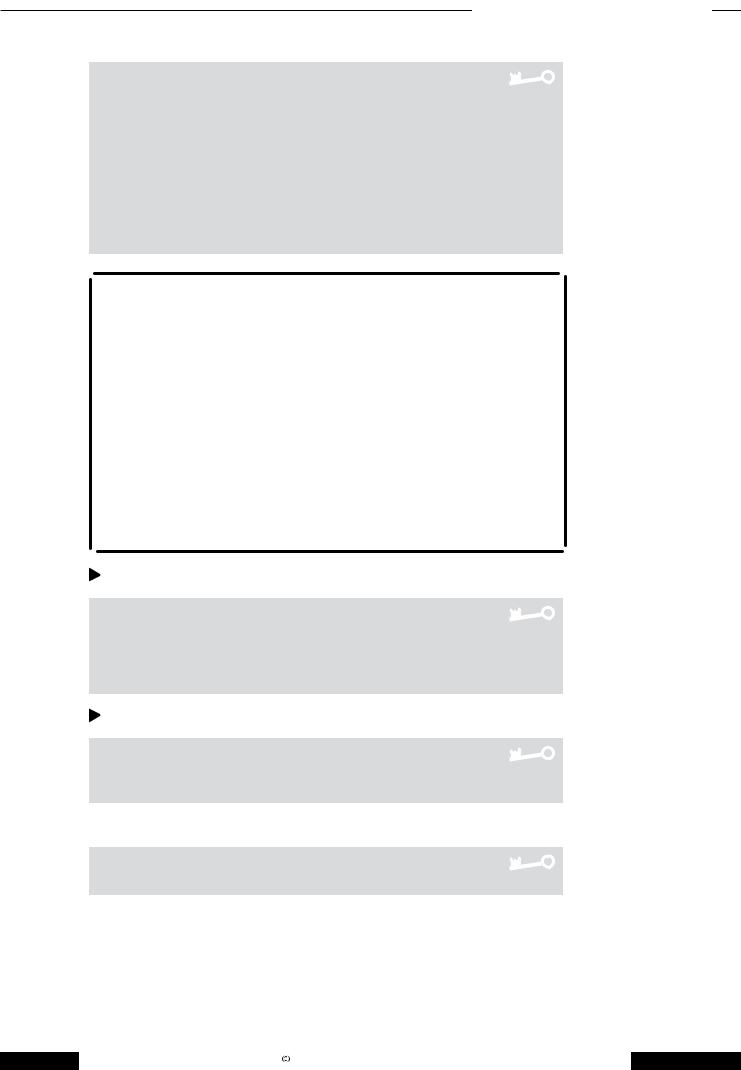
UNIT 2 Materials technology Teacher’s Notes
c Students complete the task in pairs.
Suggested answers
In tyres, puncture and tear resistance help to stop punctures and
blowouts and abrasion resistance helps the tyre to last longer. In drive belts, high elasticity allows belts to fit tightly and abrasion resistance helps them resist the friction caused by the belt turning. In brake pads, abrasion resistance helps the pads to last longer and thermal stability helps them resist the heat generated during braking. Kevlar® helps make bullet-resistant armour, which is generally heavy, more lightweight, which is better for the vehicle’s performance. Kevlar® makes sealing gaskets durable and its thermal stability allows them to resist heat
– for example, in engine cylinder heads – and its chemical stability means gaskets are not affected by engine fluids such as fuel, lubricating oil and coolant liquids.
Extension activity: more vocabulary
You could look at the meaning of some of the terms in Exercise 9b in more detail. puncture (n) = hole causing a leak of air or liquid, for example in a tyre
tear /te@(r)/ resistance = resistance to tearing (a sheet of material being pulled apart)
tension = a stretching force
revolution = one turn of something, a wheel for example
lifespan = the length of time for which a person, animal or thing exists – this also describes how long mechanical components last
frictional forces = resistance when two surfaces rub together pulp = a mass of small particles or fibres, mixed together
handling = how a vehicle responds to control inputs from the driver, for example to steering, throttle and brakes when it is driven
chemical stability = resistance to damage from chemical substances
galvanic corrosion = corrosion caused when two different types of metal are in direct contact with each other
10a
b
2.4 Students listen and answer the questions.
Answers
1At the dentist’s
2The tool is a dental drill.
3Titanium can be used for the handle, and tungsten-carbide and diamond for the bur.
2.4Students complete the extracts and then listen again to check their answers.
Answers |
|
|
|
1 |
lightweight |
3 |
durable |
2 |
abrasion resistance |
4 |
thermal stability |
c Students match the words and phrases and the synonyms.
Answers
1 b 2 a 3 e 4 c 5 d
Before you begin …
Discuss what is meant by hand tools (= tools that are held in the hand and are not powered). Ask students to give some examples of hand tools, for example hammer, saw, screwdriver, pliers.
11a Students complete the task in pairs. b Students complete the task in pairs.
21 |
Cambridge English for Engineering |
Cambridge University Press 2008 |
Photocopiable |
|
www.cambridge.org/elt/englishforengineering |
||||
|
|
|||
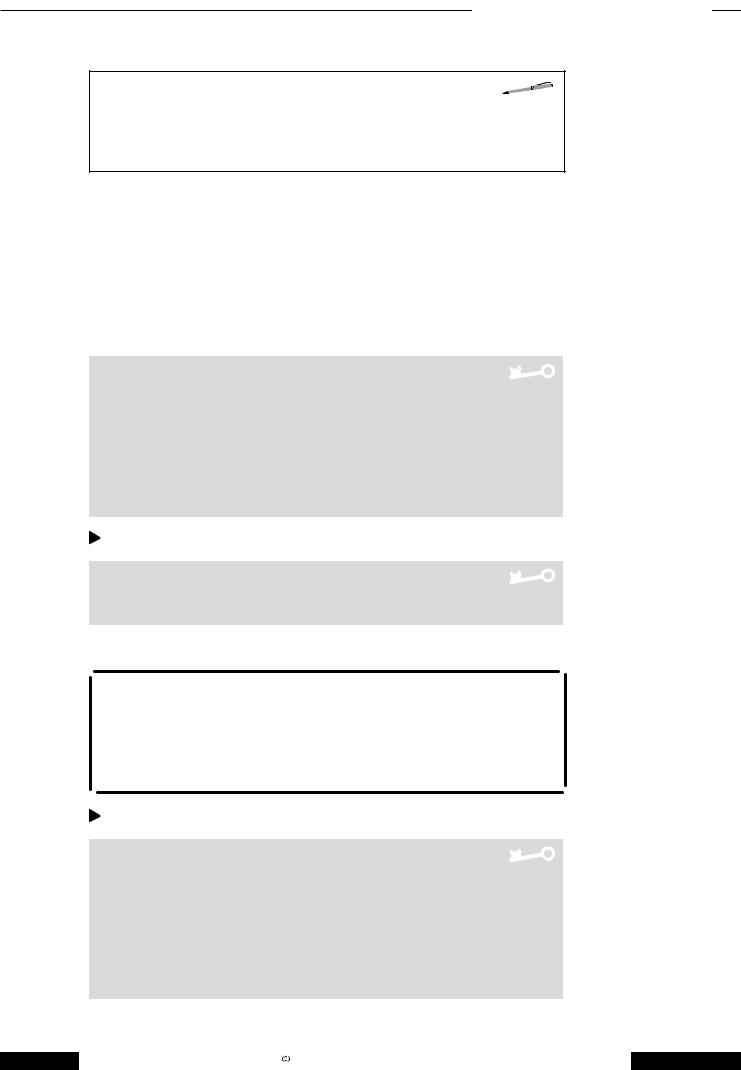
UNIT 2 Materials technology Teacher’s Notes
 Discussing quality issues
Discussing quality issues
Language note
You will find the following vocabulary useful in this section.
water-resistant, corrosion-resistant, shock-resistant, abrasion-resistant, resistance extremely, exceptionally, tremendously, quite, fairly, pretty, relatively, not very, not particularly, not (all) that, insufficiently, not adequately, not at all
Before you begin …
Ask students to explain what is meant by quality and to give some examples of technical products/brands, for example cars, work tools, mobile phones, or TVs, that have a reputation for good quality. What makes the products stand out from the competition? Why are they better from a technical standpoint? You could also ask students to explain what is meant by value for money and bring the issue
of cost into the discussion. For the products mentioned, are prices significantly higher? Is higher quality worth a higher price?
12 Students answer the questions in pairs.
Suggested answers
1Examples of situations used in advertising include motor racing, water sports such as surfing and diving, and aviation.
2The intended message is that watches are accurate and are resistant.
3Higher quality watches keep good time; are resistant to water and shocks; and are made from more expensive, better-looking materials.
4Describing something as water-resistant suggests it can resist water up to a certain limit, for example to a certain depth or pressure. Describing something as waterproof suggests it gives unlimited protection from water.
13 a |
2.5 Students listen and complete the notes. |
|||
|
Answers |
|
|
|
|
1 |
corrosion resistance |
3 |
scratch resistance |
|
2 |
water resistance |
4 |
shock resistance |
b Students complete the task in pairs.
Extension activity: more vocabulary
You could look at the following terms and discuss the difference between resistant and retardant. Some materials cannot resist the effects of flames indefinitely
and therefore only have a retarding [delaying] effect. Ask students to think of examples for each one.
chemical-resistant heat-resistant fire-resistant flame-retardant
14 a |
2.5 Students listen to the recording again and answer the questions. |
Answers
1Watch materials are sometimes chosen for marketing reasons, not technical reasons.
2They considered using submarine-grade steel in some models even though water resistance actually depends on the joints and seals, not the metal used.
3Many good watch-making materials are either ordinary, or complex, and so are not very marketable.
4Consumers are not technical experts, and make choices based on their impressions, rather than on factual information.
22 |
Cambridge English for Engineering |
Cambridge University Press 2008 |
Photocopiable |
|
www.cambridge.org/elt/englishforengineering |
||||
|
|
|||
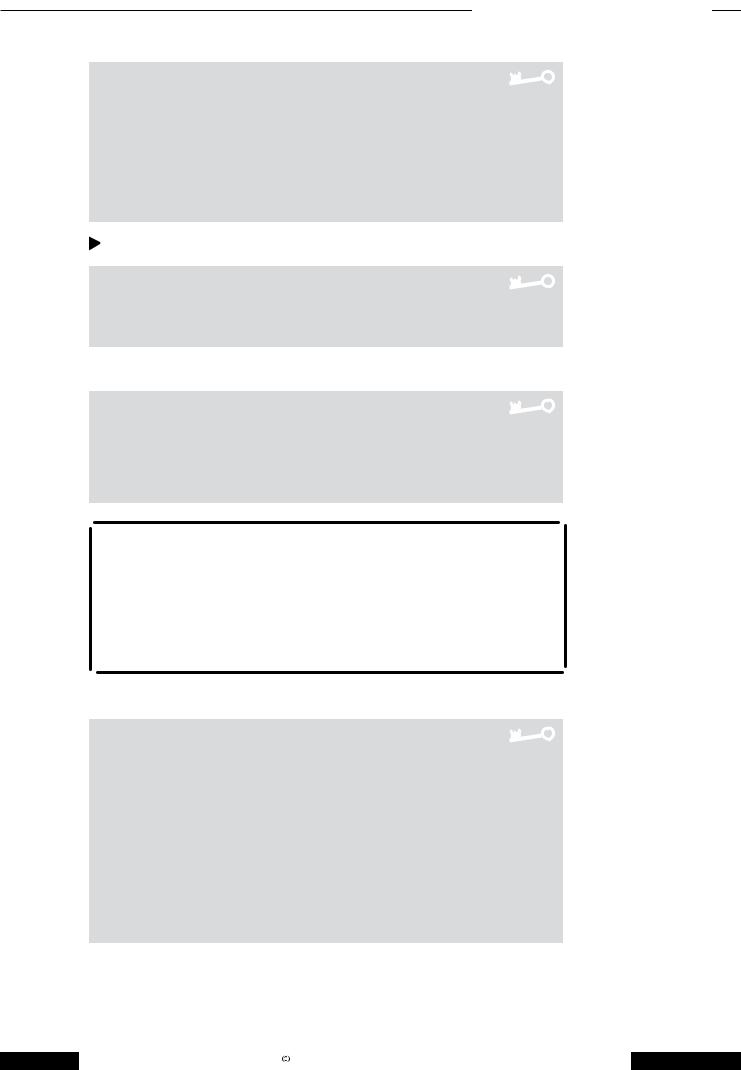
UNIT 2 Materials technology Teacher’s Notes
b Students complete the task in pairs.
Answers
1T
2T
3F – it needs a protective coating.
4F – he says it’s fairly poor in terms of looks.
5F – no – for the reasons given above.
6F – inadequate materials have never been chosen for marketing reasons.
7T
8F – complicated names are not good for marketing.
c 2.6 Students listen and underline the stressed syllable.
Answers |
|
|
|
2 |
exceptionally resistant |
5 |
relatively complex |
3 |
not at all suitable |
6 |
not all that good |
4 |
tremendously marketable |
|
|
d Students complete the table.
Answers
1extremely, exceptionally, tremendously
2quite, fairly, pretty, relatively
3not very, not particularly, not (all) that
4not enough, insufficiently, not adequately
5definitely not, not at all
Extension activity: marketability
Ask the students to give their views on how marketable the following materials are.
steel stainless steel cast iron titanium plastic aluminum/aluminium concrete copper
Encourage them to use language from Exercise 14d. Since the answer depends partly on the application in question, discuss examples of products and uses where some of the materials are viewed positively by customers.
15 Students complete the task in pairs.
Suggested answers
Steel is relatively heavy and very tough. It is pretty scratch-resistant and shockresistant. Mild steel is not very corrosion-resistant but stainless steel has good corrosion resistance and is therefore suitable for watches. Glass is quite heavy and is water-resistant and corrosion-resistant. Ordinary glass is very brittle and has fairly poor shock resistance and scratch resistance, although it is still suitable for watches. Toughened glass is more durable. Aluminium is relatively lightweight and is fairly tough. It has good corrosion resistance. It is therefore suitable for watches. Titanium is exceptionally lightweight and tough and has excellent abrasion resistance. It is also extremely corrosion-resistant and is therefore an excellent watch material. Gold is extremely heavy and pretty tough, although softer grades of gold have quite poor shock resistance and scratch resistance. Gold has excellent corrosion resistance. It is suitable for more expensive, decorative watches.
23 |
Cambridge English for Engineering |
Cambridge University Press 2008 |
Photocopiable |
|
www.cambridge.org/elt/englishforengineering |
||||
|
|
|||

UNIT 2 Materials technology Teacher’s Notes
16 Students complete the task in small groups.
Extension activity: the company’s products
If your students are in work, you could ask them to talk about the quality of their company’s products compared with those of the competition. This could include the issue of cost, and also perceived quality. Are customers’ perceptions of the company’s products accurate?
|
Cambridge English for Engineering |
Cambridge University Press 2008 |
|
|
24 |
Photocopiable |
|||
www.cambridge.org/elt/englishforengineering |
||||
|
|
|||

UNIT 2 Materials technology Teacher’s Notes
 Background information and useful web links
Background information and useful web links
Describing specific materials (pages 14 and 15)
This section focuses on commonly used engineering materials. This topic is central to all branches of engineering as any given branch of engineering uses a wide range of different materials. The context of recycling reflects the increasing importance of environmental considerations in engineering design.
Categorising materials (pages 16 and 17)
This section extends the topic of materials by looking at categories of engineering materials. The language is useful for understanding and describing the vast array of materials used in modern technology, such as conductors, insulators and semi-
conductors in electrical engineering, and composite materials and alloys in mechanical and civil engineering.
Specifying and describing properties (pages 18 and 19)
This section deals with the physical properties of materials, from the point of view of describing properties, as well as specifying what properties are required/desirable for a given application. In all fields of engineering, materials are selected for their specific properties. Specifying required properties is therefore central to engineering design.
Kevlar http://www2.dupont.com/Kevlar/en_US/
http://www2.dupont.com/Kevlar/en_US/assets/downloads/KEVLAR_Technical_Guide.pdf
Discussing quality issues (pages 20 and 21)
In dealing with the topic of quality, this section covers language for describing degree (exceptionally, not particularly, etc.) This provides a skill-based extension of the previous section, allowing the properties of materials to be qualified (exceptionally tough, not particularly durable, etc.)
|
Cambridge English for Engineering |
Cambridge University Press 2008 |
|
|
25 |
Photocopiable |
|||
www.cambridge.org/elt/englishforengineering |
||||
|
|
|||

Professional English
Cambridge English for
Engineering
TEACHER’S NOTES
UNIT 2 Materials technology
 Resource sheet 2a
Resource sheet 2a
Are the sounds in bold the same or different?
|
|
|
the same different |
1 |
steel |
steal |
3 |
2 |
ore |
or |
|
3 |
stainless steel |
less |
|
4 |
galvanised |
van |
|
5 |
wood |
food |
|
6 |
zinc |
think |
|
7 |
nickel |
well |
|
8 |
chromium |
from |
|
9 |
lead (metal) |
lead (be ahead) |
|
|
Cambridge English for Engineering |
Cambridge University Press 2008 |
|
|
26 |
Photocopiable |
|||
www.cambridge.org/elt/englishforengineering |
||||
|
|
|||

Professional English
|
|
Cambridge English for |
||
|
|
Engineering |
||
|
|
TEACHER’S NOTES |
||
UNIT 2 Materials technology |
|
|
||
Resource sheet 2b |
|
|
|
|
Material |
Made from |
Recyclable? |
||
Steel |
Iron (from iron ore) |
Yes – can be melted down and iron |
||
|
Carbon (from coal) |
recovered for reuse |
||
Natural rubber |
Latex (from trees) |
Not easily – tyres can be ground into |
||
|
|
crumbs (small lumps) for use in other |
||
|
|
materials |
||
Glass |
Silicon (from sand) |
Yes |
||
Bronze |
Copper (from copper ore) |
Yes – can be melted down and metals |
||
|
Tin (from tin ore) |
separated |
||
Brass |
Copper (from copper ore) |
Yes – can be melted down and metals |
||
|
Zinc (from zinc ore) |
separated |
||
|
Cambridge English for Engineering |
Cambridge University Press 2008 |
|
|
27 |
Photocopiable |
|||
www.cambridge.org/elt/englishforengineering |
||||
|
|
|||
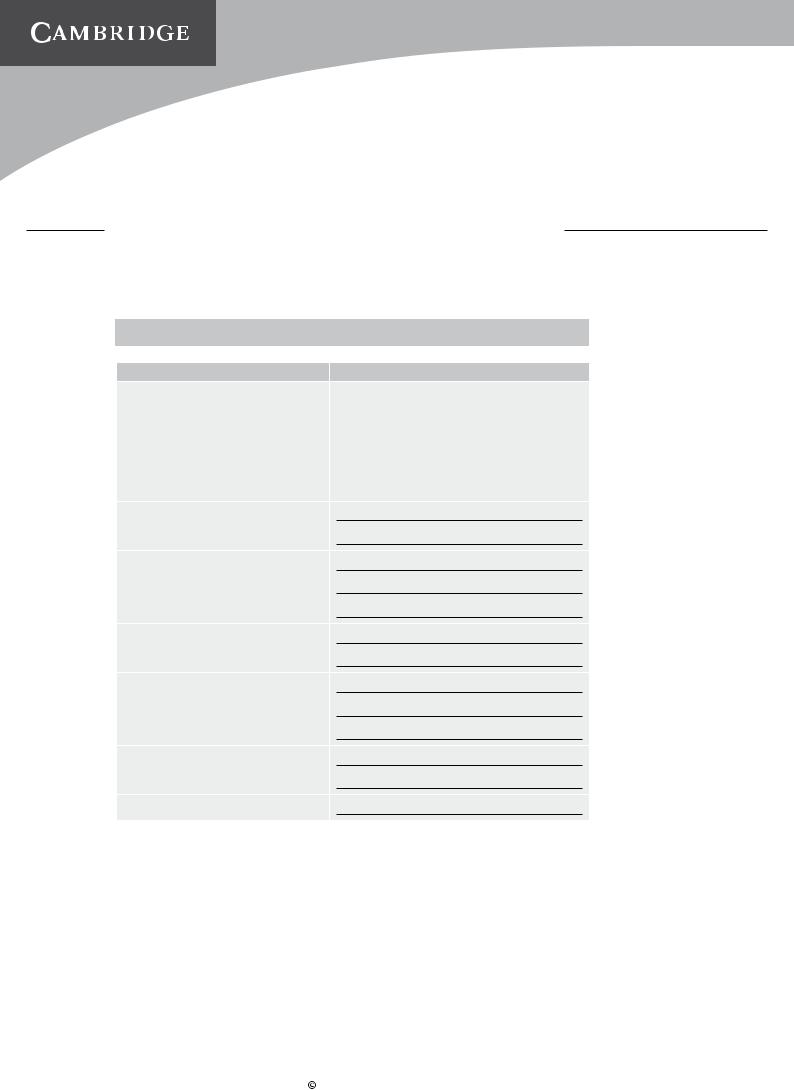
Professional English
Cambridge English for
Engineering
TEACHER’S NOTES
UNIT 2 Materials technology
 Resource sheet 2c
Resource sheet 2c
Complete the table using the materials in the box. You will need to use each material more than once. Add any other examples you can think of.
aluminium/aluminum bronze copper glass iron nylon steel synthetic rubber
Material category |
Examples of specific materials in the category |
Metals |
aluminium/aluminum |
|
|
|
|
|
|
|
|
Alloys
Non-metals
Ferrous metals
Non-ferrous metals
Polymers
Ceramics
|
Cambridge English for Engineering |
Cambridge University Press 2008 |
|
|
28 |
Photocopiable |
|||
www.cambridge.org/elt/englishforengineering |
||||
|
|
|||

Professional English
Cambridge English for
Engineering
TEACHER’S NOTES
UNIT 2 Materials technology
 Resource sheet 2d
Resource sheet 2d
Complete the table with adjectives and nouns. Underline the stressed syllables.
|
Adjective |
Noun |
1 |
tough |
toughness |
2 |
elastic |
|
3 |
|
resistance |
4 |
|
stability |
5durable
6light
7 |
fragility |
8flexible
9heavy
10brittle
11rigid
29 |
Cambridge English for Engineering |
Cambridge University Press 2008 |
Photocopiable |
|
www.cambridge.org/elt/englishforengineering |
||||
|
|
|||
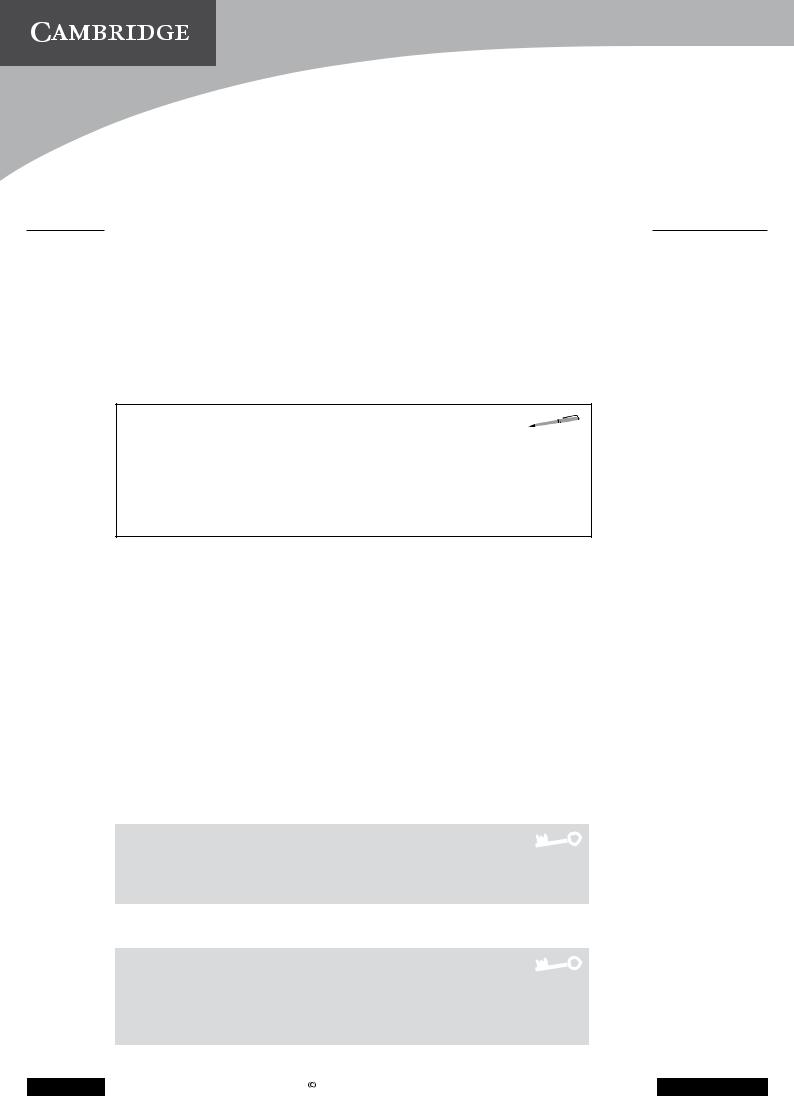
Professional English
Cambridge English for
Engineering
TEACHER’S NOTES
UNIT 3 Components and assemblies
•Describing component shapes and features
•Explaining and assessing manufacturing techniques
•Explaining jointing and fixing techniques
•Describing positions of assembled components
 Go to page 39 for essential background information and useful web links.
Go to page 39 for essential background information and useful web links.
 Describing component shapes and features
Describing component shapes and features
Language note
You will find the following vocabulary useful in this section. layout, laid out, profile, configuration
circular, rounded, rectangular, cylindrical, linear, triangular
The nouns and adjectives are usually different (a rectangle / a rectangular shape, a cylinder / a cylindrical shape), but there are exceptions (a square / a square shape, an oval / an oval shape).
Before you begin …
Ask students to explain what is meant by components and assemblies and the connection between the two. You could focus on cars as a familiar example. A component is an individual part, such as the wheel of a car. An assembly is a number of components that have been put together/assembled. For example, a car engine is an assembly, assembled from hundreds of components such as pistons, shafts, electronic components, etc.
Ask students to explain what is meant by shapes and features. You could hold up the course CD as an example to illustrate the terms. It’s a circular shape. One of its features is a hole in the centre.
1 Students complete the task in pairs. Alternatively, this discussion could be done before students open their books. Read out the rubric and ask students to work in pairs before reporting back to the group.
2 a  3.1 Students listen and summarise the project.
3.1 Students listen and summarise the project.
Answer
The aim of the project is to formulate a policy that will state which plug
and socket configurations their company recommends, and explain the technical reasons why they are recommended.
b Students complete the task in pairs.
Answers
The profile of the pins means the shape of the individual pins, for example a rectangular cross-section or a circular cross-section.
A standard configuration means a uniform arrangement, for example in a given country all plugs have a standard layout – they all exactly the same.
30 |
Cambridge English for Engineering |
Cambridge University Press 2008 |
Photocopiable |
|
www.cambridge.org/elt/englishforengineering |
||||
|
|
|||
